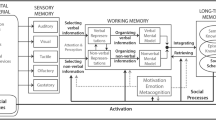Abstract
Today, the implication of Web 2.0 technologies in e-learning allows envisaging new teaching and learning forms, advocating an important place to the collaboration and social interaction. However, in e-learning systems, learn in a collaborative way is not always so easy because one of the difficulties when arranging e-learning courses can be that these courses are not adapted to this type of learning based on collaboration. In most of time, these courses are constructed individually, a way that does not stimulate collaborative and social learning. This work is at the heart of this issue. It seeks to find conceptual solutions for computer design and development of pedagogical knowledge, which should be in adequacy with current e-learning practices based on Web 2.0 features: collaborative e-learning. Thus, this paper presents a process of online and collaborative design-development of e-learning contents as concept maps, process which takes place in an online environment. The novel aspect of this approach is that the content generated following the proposed process is becoming less the product of a single author, but this is the result of a team work, and is adapted to collaborative e-learning practices. The paper describes the proposed process, presents the architecture of the implemented environment and exposes the adopted technical choices. The paper presents also the results of the experimentation of the framework in a realistic situation, which is based on the analysis of collected traces of a group of teachers (n = 30). The results found validate the interest of teachers involved toward the proposed approach.









Similar content being viewed by others
References
AlCattan, R. F. (2014). Integration of Cloud Computing and Web2.0 Collaboration Technologies in E-Learning. International Journal of Computer Trends and Technology, 12(1), 46–55.
Al-Zoube, M. (2009). E-learning on the cloud. International Arab Journal of e-Technology, 1(2), 58–64.
Anne, K. L., & Grete, O. H. (2009). Collaborative learning in e-learning, virtual book e-pedagogy for teachers in higher education. Norway: Bergen University College.
Cormier, L. (2012). Le soutien au développement de ressources numériques pour l’enseignement et l’apprentissage dans les universités québécoises, 80ème Congrès de l’ACFAS.
El Mhouti, A., Nasseh, A., & Erradi, M. (2014). Towards a socioconstructivist and collaborative learning design approach to modeling pedagogical contents used in e-learning: implementation and experimentation. International Journal of Innovation and Applied Studies, 8(4), 1653–1668.
Fucks-Kittowski, F., Köhler, A., & Fuhr, D. (2004). Roughing up processes the wiki way – knowledge communities in the context of work and learning processes. Proceedings of I-Know, 2004, 484–493. Graz, Austria, 2004.
Gupta, V., Chauhan, D. S., & Dutta, K. (2013). Incremental development & revolutions of E-learning software systems in education sector: a case study approach. Human-centric Computing and Information Sciences, 3(8). doi:10.1186/2192-1962-3-8. Springer.
Gütl, C. (2008). Moving towards a generic, service-based architecture for flexible teaching and learning activities. In C. Pahl (Ed.), Architecture solutions for E-Learning systems. Hershey: Peer-reviewed book chapter, Idea Group Inc..
Helic, D. (2007). Formal representations of learning scenarios: a methodology to configure E-learning systems. Journal of Universal Computer Science, 13(4), 504–531.
Ocker, R. (2001). Collaborative learning environments: exploring student attitudes and satisfaction in face-to-face and asynchronous computer conferencing settings. Journal of Interactive Learning Research, 12(4), 427–448.
Rupesh, K. A. (2009). E-Learning 2.0: Learning Redefined, Library Philosophy and Practice, ISSN 1522-0222.
Safran, C., Helic, D., & Gütl, C. (2007). E-Learning practices and Web 2.0, International Conference on Interactive Computer Aided Learning, vol. 1, Villach, Austria, September 26–28, 2007.
Strijker A. & Collis B. (2002). New pedagogies and Re-usable learning objects: toward a different role for an LMS. In Proceedings of World Conference on Educational Multimedia, Hypermedia and Telecommunications, 334–339.
Thompson, J. (2007). Is education 1.0 ready for web 2.0 students? Innovate, 3(4), 1–6.
Trillaud, F. (2013). Architecture pour le contrôle des interactions et le pilotage d’une application interactive multiutilisateurs à exécution adaptative : application à un environnement de FOAD, Doctoral thesis, University of La Rochelle, France.
Wang, M. (2011). Integrating organizational, social, and individual perspectives in Web 2.0-based workplace e-learning. Journla of Information Systems Frontiers, 13(2). doi:10.1007/s10796-009-9191-y. Springer.
Author information
Authors and Affiliations
Corresponding author
Rights and permissions
About this article
Cite this article
El Mhouti, A., Nasseh, A., Erradi, M. et al. Enhancing collaborative learning in Web 2.0-based e-learning systems: A design framework for building collaborative e-learning contents. Educ Inf Technol 22, 2351–2364 (2017). https://doi.org/10.1007/s10639-016-9545-2
Published:
Issue Date:
DOI: https://doi.org/10.1007/s10639-016-9545-2




